About Iowa
STATE SYMBOLS
STATE BANNER & MOTTO
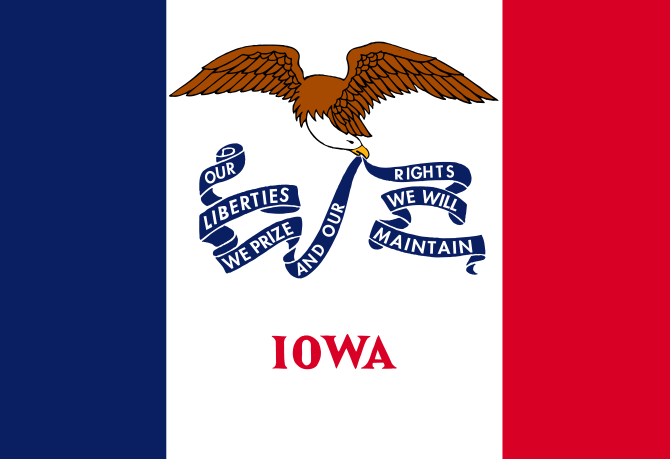
Iowa was almost 75 years old before the state flag was adopted by the General Assembly. Creation of the state flag had been suggested for years by patriotic organizations, but no action was taken until World War I, when Iowa National Guardsmen stationed along the Mexican border suggested a state flag was needed to designate their unit. This prompted the state's Daughters of the American Revolution (DAR) to design a flag in 1917. The Iowa General Assembly officially adopted the design in 1921.
Designed by Mrs. Dixie Cornell Gebhardt of Knoxville, Iowa, a member of the DAR, the state flag consists of three vertical stripes -- blue, white and red. Gebhardt explained that the blue stands for loyalty, justice and truth; the white for purity; and the red for courage. On the white center stripe is an eagle carrying in its beak blue streamers inscribed with the state motto: "Our liberties we prize, and our rights we will maintain." The word "Iowa" is in red just below the streamers.
All schools must fly the state flag on school days. The flag may also be flown on the sites of public buildings. When displayed with the United States flag, the state flag must be flown below the national emblem.
STATE SONG
S.H.M. Byers wrote “Song of Iowa,” the state’s official state song, in 1897. The Iowa Legislature adopted the song in 1911. Byers’ lyrics share his love for Iowa, and the song is set to the tune for “O Tannenbaum.”
STATE FLOWER
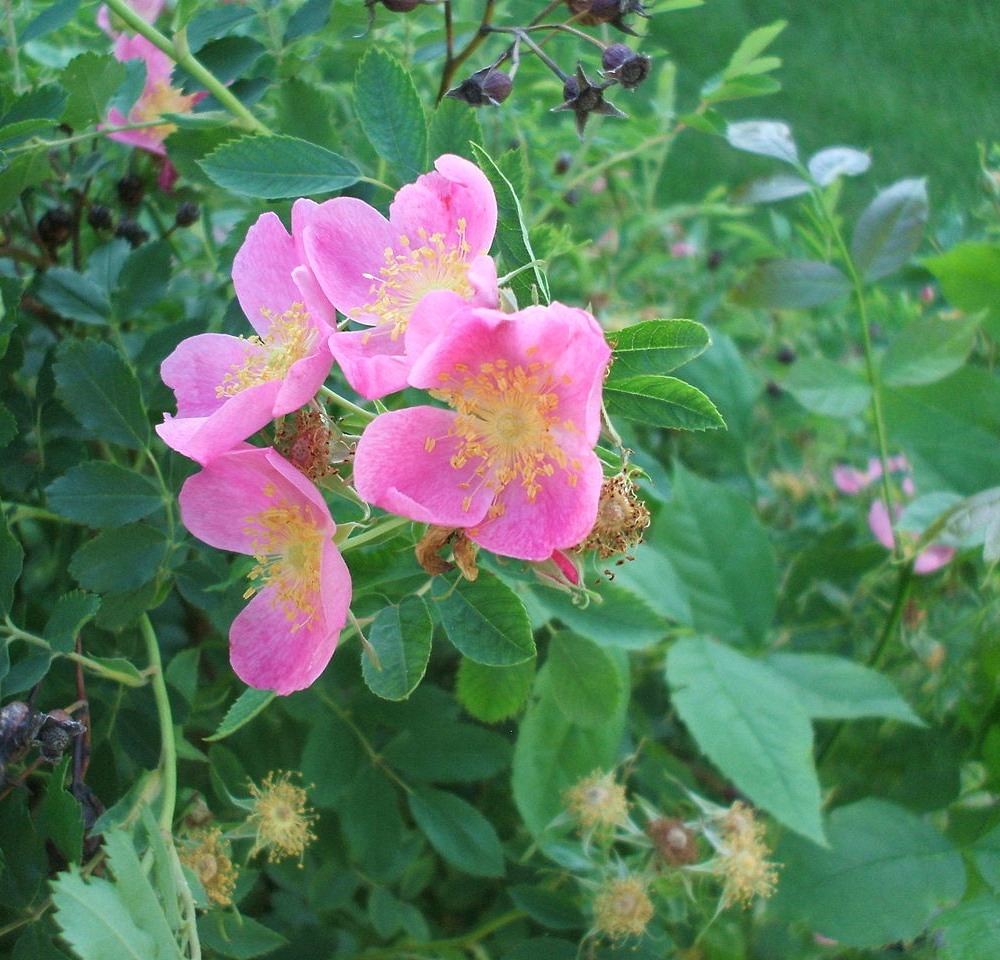
The 26th Iowa General Assembly designated the wild rose as the official state flower in 1897. It was chosen for the honor because it was one of the decorations used on the silver service which the state presented to the battleship USS Iowa that same year.
Although no particular species of the flower was designated by the General Assembly, the wild prairie rose (rosa pratincola) is most often cited as the official flower. Wild roses are found throughout the state and bloom from June through late summer. The flower, in varying shades of pink, is set off by many yellow stamens in the center.
STATE BIRD
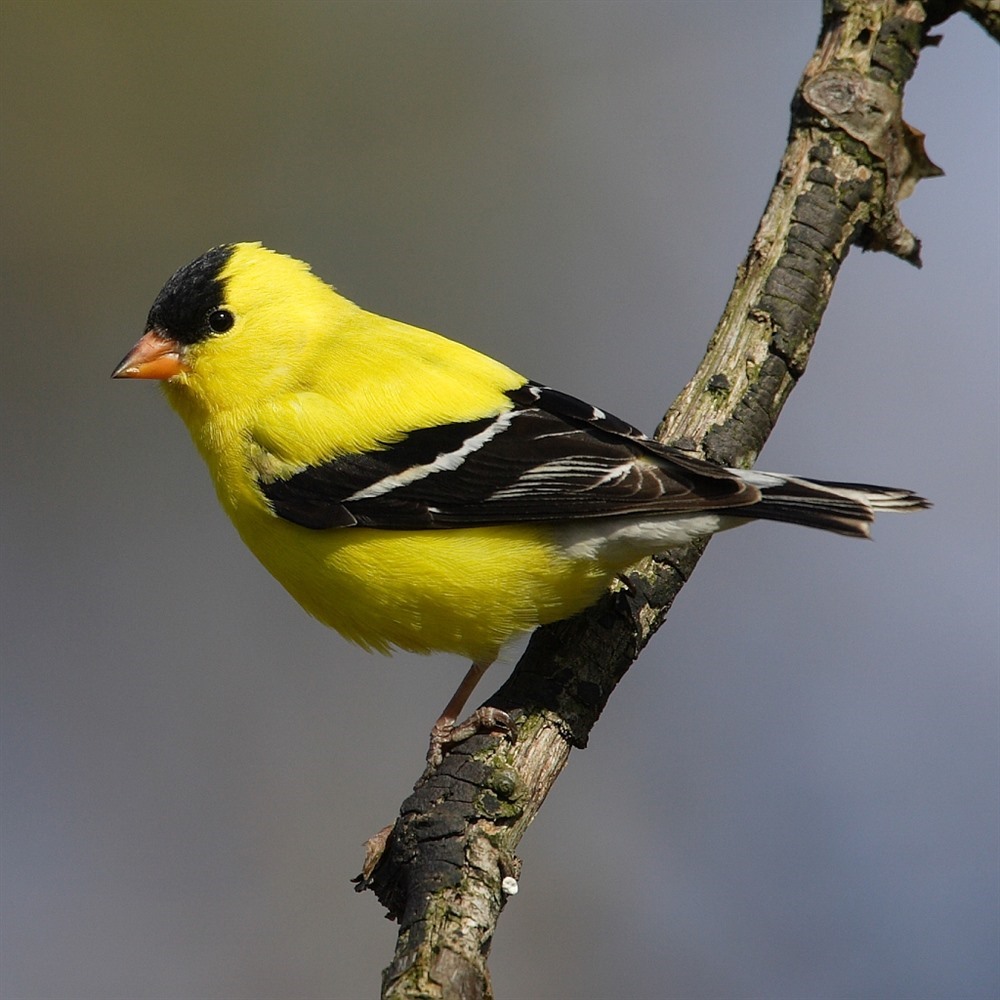
The Iowa General Assembly designated the eastern goldfinch, also known as the American goldfinch and the wild canary, as the official state bird in 1933. It was chosen as the state bird because it is commonly found in Iowa and often stays through the winter.
Seeds from dandelions, sunflowers, ragweed and evening primrose are the main source of food for the eastern goldfinch (carduelis tristis). In late July or early August, goldfinches build their nests from plant materials and line them with thistledown. The pale blue-white eggs of the eastern goldfinch hatch after two weeks and then, following two to three more weeks, the young birds leave the nest.
The top of a male's head is topped with black and their bright yellow body also has black wings and tail. The female has a dull olive-yellow body with a brown tail and wings. The male goldfinch acquires the same dull plumage in the winter months.
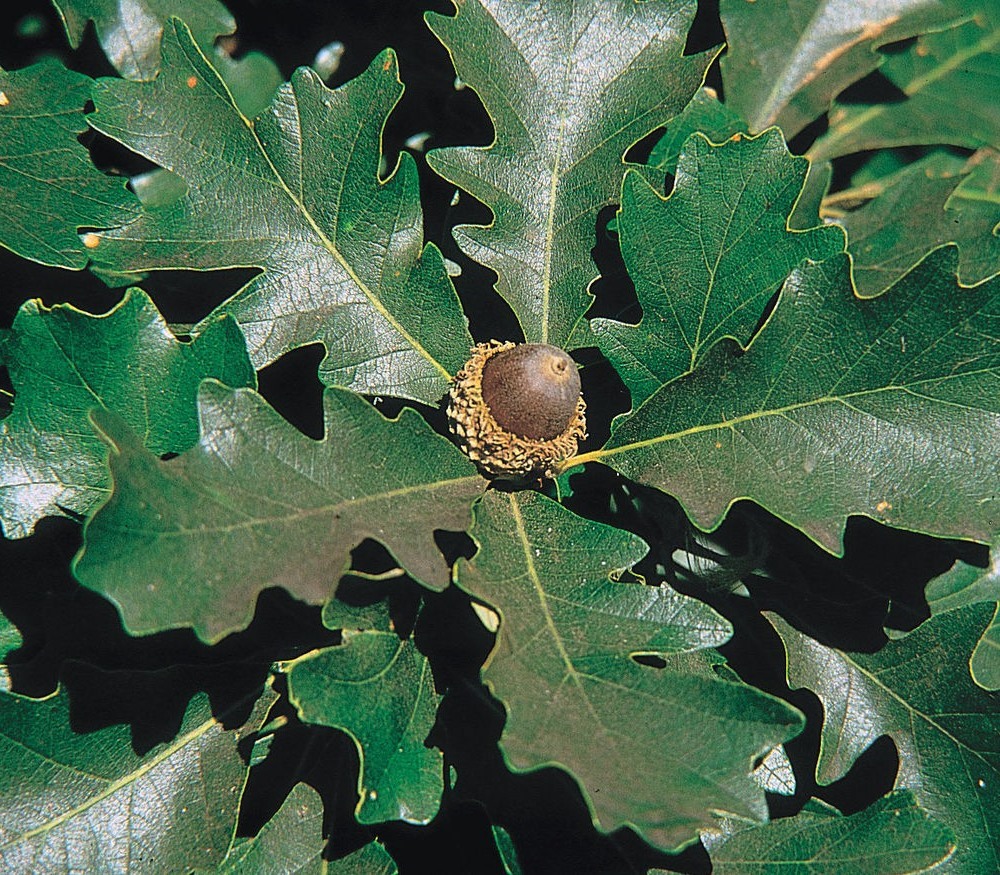
The oak was designated as the official state tree in 1961. The Iowa General Assembly chose the oak because it is abundant in the state and serves as shelter, food and nesting cover for many animals and birds.
It is difficult to find a tract of natural woodland in Iowa that does not have in it at least one species of oak. No other group of trees is more important to people and wildlife. Acorns, the nuts of oak trees, are a dietary staple of many animals and birds. Deer, wild turkeys, pheasants, quail, wood ducks, raccoons, squirrels, chipmunks, bluejays, nuthatches, grackles and several kinds of woodpeckers are a few of the species that depend on acorns for a significant portion of their diet.
STATE ROCK
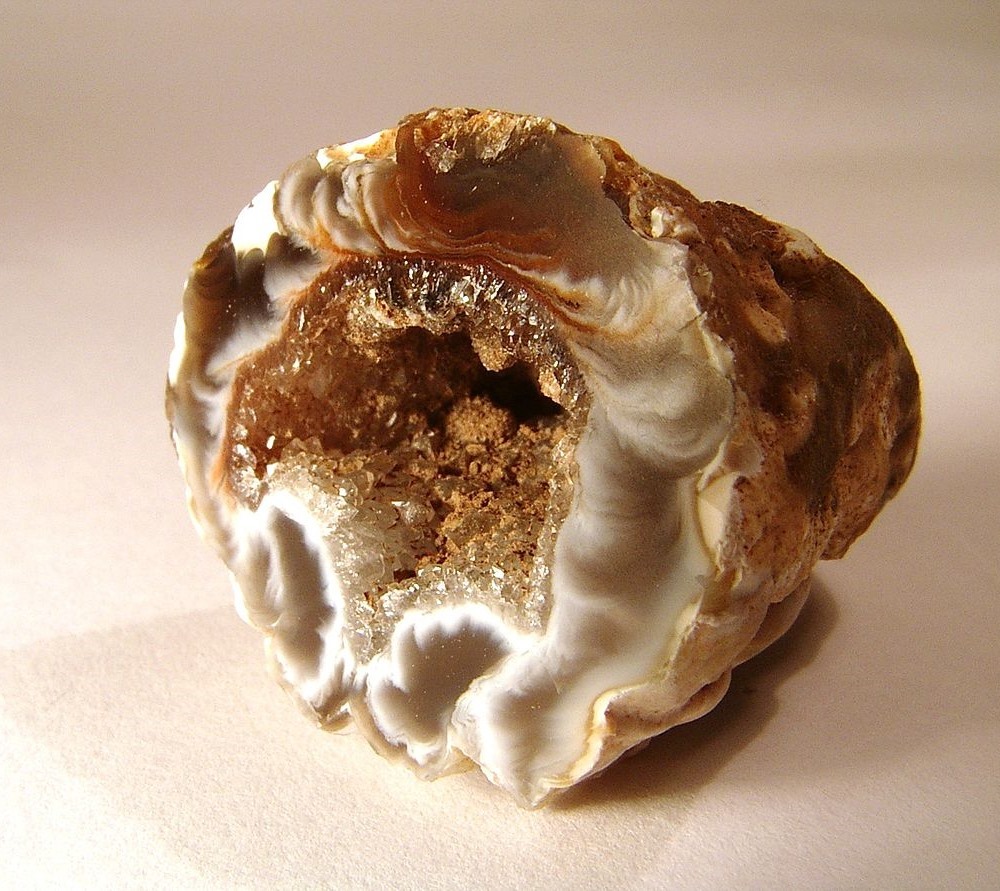
The Iowa General Assembly designated the geode as the official state rock in 1967. Because Iowa is well known for the presence of the geode, it was chosen as the official rock in an effort to promote tourism in the state. Legislators who favored making the geode the state rock pointed out that it is among the rarest and most beautiful of rocks and that Iowa is known worldwide because of the large number found in the state. Other rocks considered for official status were limestone and fossil coral.
In Latin, the word geode means earthlike. Geodes are shaped like the earth and average about four inches in diameter. Geodes are found in limestone formations and have a hard outer shell. When carefully broken open, a sparkling lining of mineral crystals, most often quartz and calcite, is revealed. Geologists attribute the crystal growth to the percolation of groundwater in the geologic past. Southeastern Iowa is one of the state's best Geode collecting areas. Geode State Park in Henry County is named for the occurrence of the geode.
STATE SEAL
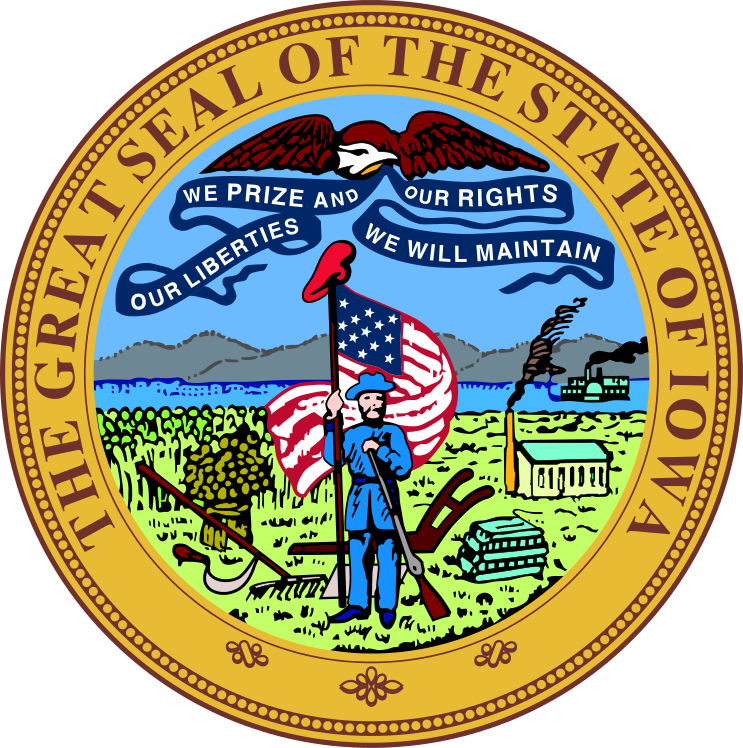
The Great Seal of Iowa pictures a citizen soldier standing in a wheat field surrounded by farming and industrial tools, with the Mississippi River in the background. An eagle overhead bears the state motto.
STATE NICKNAME
Iowa is also known as the Hawkeye State.
STATE QUARTER
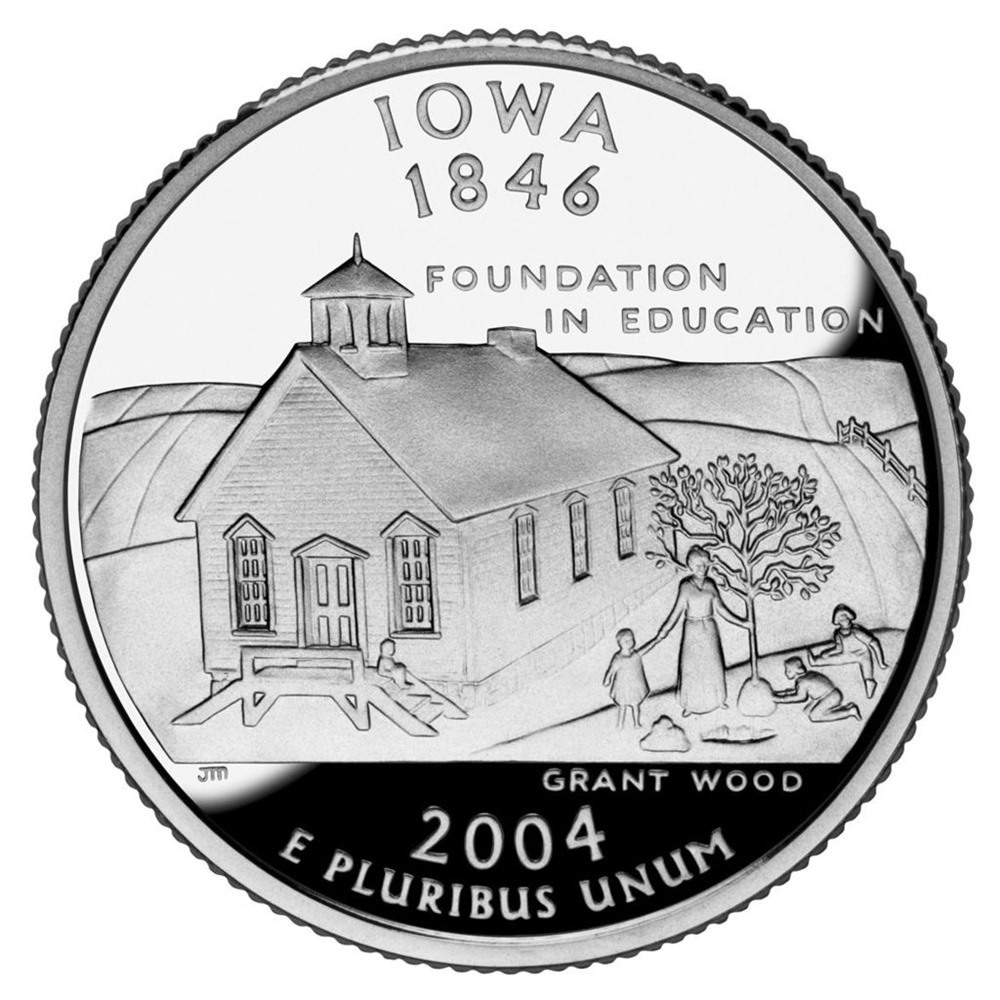
In 2004, when Governor Vilsack and the head of the U.S. Mint unveiled the 29th commemorative quarter at the foot of the Iowa Capitol, the focus was on education. Schoolchildren, teachers and dignitaries were on hand for the event as the Iowa quarter was introduced as “the nation’s only education quarter.” The coin features Iowa artist Grant Wood’s “Arbor Day” painting of a one-room schoolhouse and teacher with students planting a tree. The motto on the coin is “Foundation in Education.”
GEOGRAPHY & CLIMATE
At 199 miles long and 310 miles wide, Iowa is the 26th largest state in the United States. Iowa has 99 counties and 947 cities. The capital city is Des Moines. The highest elevation is 1,671 feet at Hawkeye Point, near Sibley. The lowest elevation is 480 feet, near Keokuk. The average high is 74 degrees, while the average low is 17 degrees.
POPULATION
Iowa ranks 30th in total population, at 3,123,899 people. The median household income in Iowa is $52,716.
IOWA HISTORY
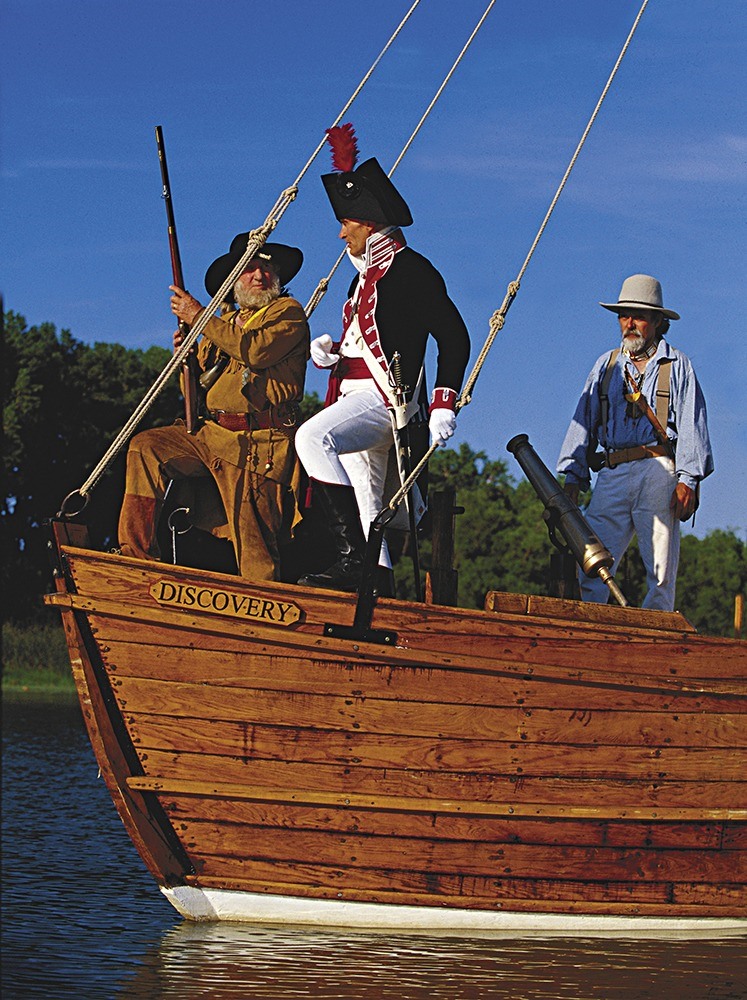
LOUISIANA PURCHASE
The word "Iowa" comes from the American Indian tribe of the same name. Iowa was part of the Louisiana Purchase, a deal arranged between President Thomas Jefferson and Napoleon Bonaparte of France that brought a vast tract of the continent under the control of the United States. The area was closed to white settlement until the early 1830s.
LEWIS & CLARK EXPEDITION
Early explorers included the famed Lewis and Clark. Sergeant Charles Floyd's was the only death during that historic journey. A monument stands in Sioux City near the spot where Floyd was buried. Sioux City is also home to the Lewis and Clark Interpretive Center, an almost 20,000-square-foot, private, non-profit cultural complex.
EARLY STATE GOVERNMENT
After white settlement began with the Black Hawk Purchase, Iowa became part of Michigan Territory. When Michigan achieved statehood in 1837, Iowa then became a part of Wisconsin Territory. Finally, two years later, Iowa Territory was carved out of the area of Wisconsin Territory west of the Mississippi River.
The first Iowa Territory legislature met in Burlington before a territorial capital city was finally selected in Johnson County. In Iowa City, the government seat was established in a grand structure known today as Old Capitol. Built in the early 1840s, Old Capitol served as the last capitol of Iowa Territory and the first capitol of the state. Under the 1857 Iowa constitution, the seat of state government was moved to Des Moines, a more central location.
STATEHOOD
Iowa became the 29th state on December 28, 1846. To learn more about Iowa's past and present, view our Historic Iowa page or visit the State Historical Museum of Iowa.
NATIONAL TREASURES
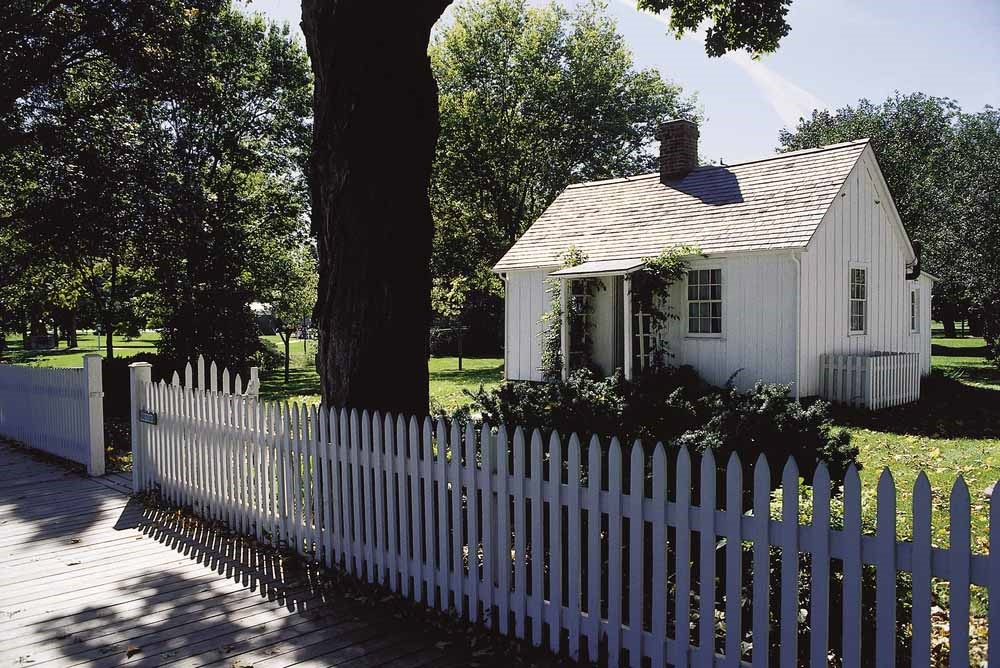
NATIONAL HISTORIC SITE
The Herbert Hoover Presidential Library and Museum affords visitors insights into the life and leadership of America’s 31st president. Located in West Branch, the site includes Hoover’s birthplace cottage and final resting place. A blacksmith shop, one-room schoolhouse, Friends meeting house, replica of the Oval Office, and changing American history exhibits are also part of the library and museum operated by the National Archives and Records Administration. The Visitor Center is operated by the National Park Service.
NATIONAL MONUMENT
Effigy Mounds is a group of prehistoric American Indian burial and ceremonial mounds located near Harpers Ferry in northeast Iowa. The mounds - shaped like birds and animals between 500 B.C. and 1300 A.D. - form the sacred centerpiece of a 2,526-acre forest along the Mississippi River bluffs. Natural resources include 11 miles of hiking trails, tallgrass prairie and wetlands.
NATIONAL HERITAGE AREA
Silos & Smokestacks National Heritage Area is a federally designated, 37-county region in northeast Iowa, where visitors experience the past and present of Iowa agriculture through a network of sites. One of only 27 National Heritage Areas in the United States, Silos and Smokestacks tells the story of American agriculture, agribusiness and farm life. It is affiliated with the National Park Service.
NATIONAL WILDLIFE REFUGES
DeSoto National Wildlife Refuge
Located near Missouri Valley in west central Iowa, offers 7,800 acres of refuge to migrating waterfowl — especially geese and ducks — along the Missouri River. Bald eagles also winter here.
Driftless Area National Wildlife Refuge
Located in northeast Iowa along the Mississippi River, is part of the Upper Mississippi National Wildlife and Fish Refuge.
Neal Smith National Wildlife Refuge
Includes the Prairie Learning Center near Prairie City in central Iowa. Showcases Iowa's prairie heritage with car and walking tours to encounter bison and elk, native flowers, and prairie grasses.
Port Louisa National Wildlife Refuge
Near Wapello in southeast Iowa, is a natural haven for wildlife along the bend of in the Mississippi River.
Union Slough National Wildlife Refuge
Located in northwest Iowa, the refuge is Kossuth County's welcome to wildlife.
ONLY IN IOWA
_PhotoCreditDubuqueAreaCVB.jpg)
BIGGEST, TALLEST, SMALLEST, CROOKEDEST
Some call them wacky. We call them wonderful. They’re our biggest, smallest, tallest, crookedest attractions! The World's Largest Truckstop. The World's Shortest and Steepest Railway. And don't forget giant rocking chairs, frying pans and wine bottles. It's the stuff dreams – and road trips – are made of. Hop in your car and head out to see some of the attractions you’ll only find in Iowa.
24 UNIQUELY IOWA ATTRACTIONS
Looking for a destination that’s different? A place that’s peculiar? Somewhere that’s truly off the beaten path? Iowa has you covered. Here are some spots that have stories and sights you won’t find anywhere else in the world. Did you know council Bluffs is home to the only remaining rotating jailhouse? Or in Gladbrook, you can find scale models of Notre Dame and the Challenger spacecraft - made out of matchsticks? And in West Bend, you can find the largest collection of precious stones and gems anywhere in the world?
FAMOUS IOWANS
A president and first lady. Stars of the stage and screen. A fearless frontier lawman. Mega musicians. And a famous Starfleet Captain who technically hasn’t even been born yet. See our full list of Famous Iowans.
